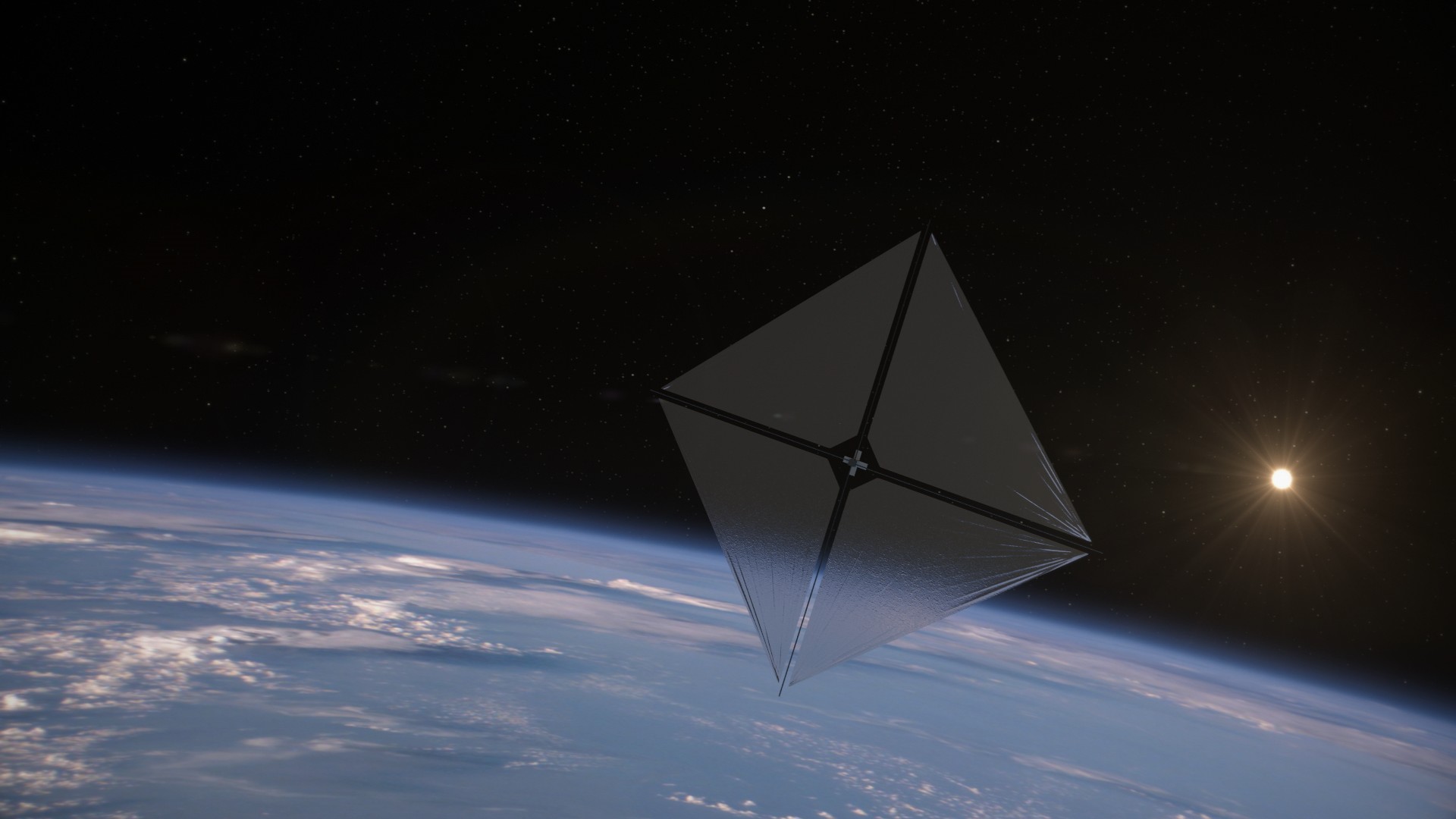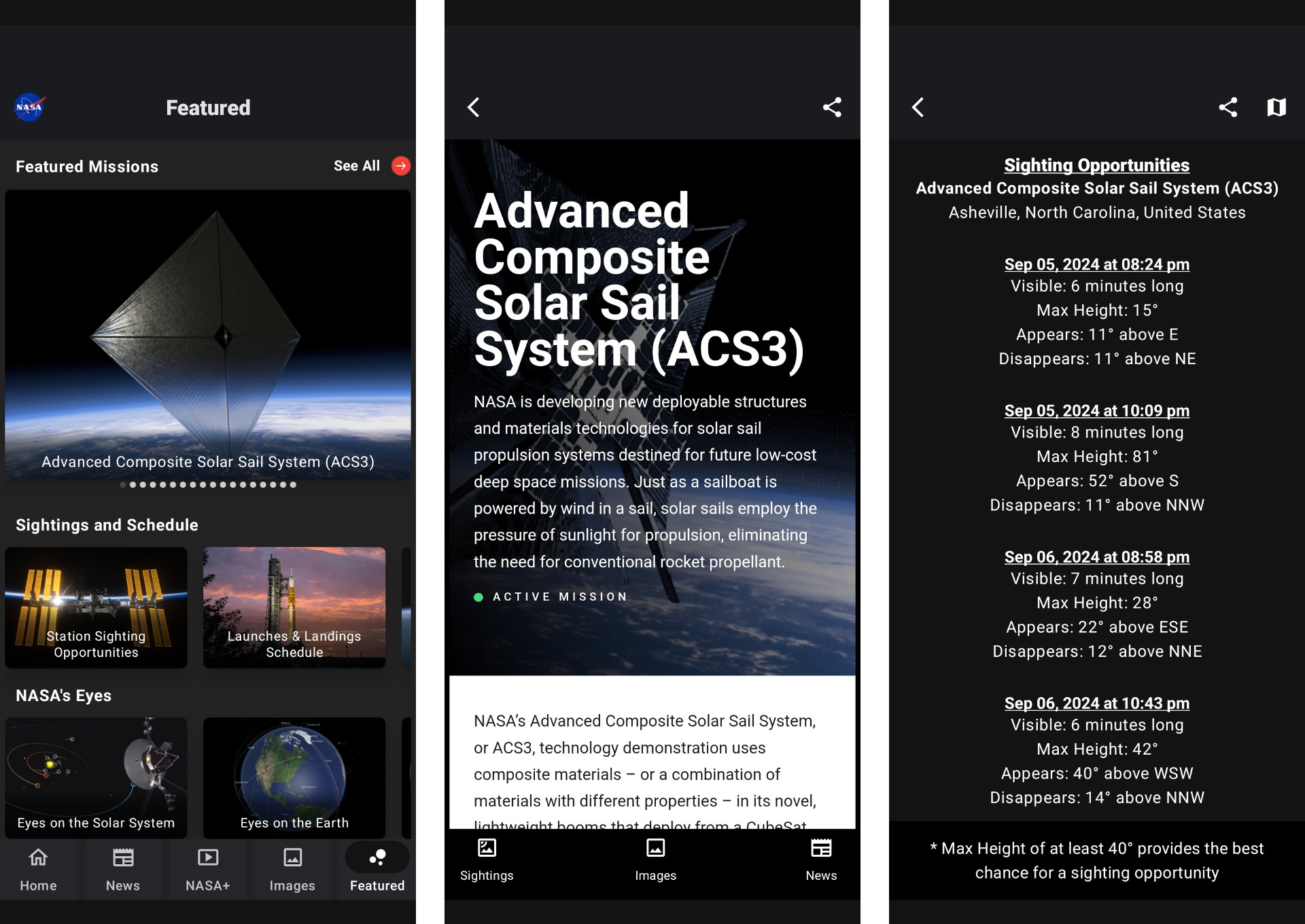
An experimental NASA solar sail can be seen in the night sky as it orbits the Earth.
NASA's Advanced Composite Solar Sail System (ACS3) launched in April 2024 atop a Rocket Lab Electron rocket. The mission is designed to test solar sail technology to help NASA develop larger spacecraft in the future using this next-generation propulsion system. Solar sails work similarly to nautical sails, but instead of being pushed by wind, they are impacted by the pressure of sunlight as photons bounce off of the reflective material they're made from.
On Aug. 29, the ACS3 spacecraft deployed its 860-square-foot (80-square-meter) solar sail while operating at an altitude about 600 miles (1,000 kilometers) above Earth, which is nearly twice as high as the International Space Station. As the ACS3 spacecraft orbits Earth, it's large surface area means it reflects enough sunlight to be seen from the ground. Under some conditions, the solar sail demonstrator could even appear as bright as Sirius, the brightest star in the night sky. If you want to see it for yourself, you're in luck: NASA has an app that lets you track sighting opportunities from your location.
To most easily see NASA's ACS3 solar sail, you'll want to download the official NASA app from the Google Play Store or Apple App Store.
From there, navigate to the "Featured" tab at the bottom of the app. You should see a section for the Advanced Composite Solar Sail System (ACS3) under "Featured missions."
Once you tap on that mission, you'll be able to then tap on "Sightings." If you've allowed the app to access your location, the app will give you a list of times and dates for when you'll be able to see NASA's solar sail, including in what direction of the sky it will be visible, its celestial altitude and the duration of each sighting.

Satellite tracker Kevin Fetter caught ACS3 on camera on Sept. 5 as it passed near one of the brightest stars in the night sky. "It got bright for a short time as it was passing by the star. Briefly it was just as bright as Vega, the 5th brightest star in the night sky," Fetter told SpaceWeather.com.
Some researchers believe solar sails could advance space travel in the future by allowing the development of spacecraft that are lightweight yet can still travel great distances without the need for carrying heavy fuels.
Solar sails can theoretically also reach high speeds, as it is believed their unique method of propulsion can grant them infinite acceleration.
Related: NASA spacecraft captures 1st photo of its giant solar sail while tumbling in space

Solar sails could lower the cost of deep space exploration while also enabling missions of long durations, since their fuel supplies never exhaust. If ACS3 can successfully maneuver in orbit and succeed in its mission, it could potentially help develop more advanced solar sail spacecraft.
"The hope is that the new technologies verified on this spacecraft will inspire others to use them in ways we haven't even considered," said Alan Rhodes, the ACS3 mission's lead systems engineer at NASA's Ames Research Center, in an agency statement.
Scientists have already proposed using solar sails to send missions to Saturn's moon Enceladus or Jupiter's moon Europa, while the Breakthrough Starshot initiative has for years suggested that solar sails propelled by lasers could reach Alpha Centauri, the closest star system to our own, in order to search for life.







